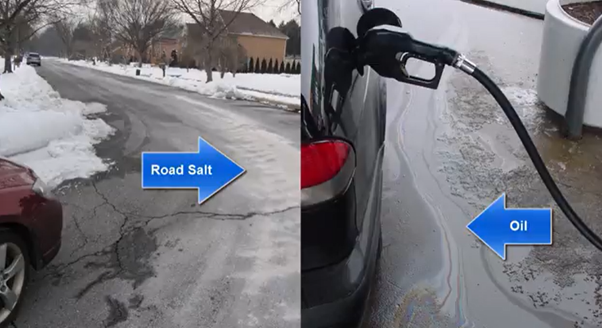CONSERVATION CORNER
A weekly blog for all things conservation
 By: Andy Yencha; Penn State Extension Stormwater harms local creeks, rivers, and lakes in two major ways. It causes physical damage like flooding, streambank erosion and loss of fish habitat when too much water drains into a creek or river too quickly; and it causes water pollution because stormwater often contains harmful materials picked up when it washed across the land. These pollutants can be grouped into five broad categories. Solid Waste - This stormwater pollution category includes items that should have been disposed of in a landfill or incinerated, but instead are uncontained in the environment where they can harm wildlife and clog stormwater systems. Sources of trash include careless and intentional littering, historic dumping before the days of widespread trash collection, and loose garbage set outside on windy days. Solutions include keeping solid waste contained and removing it from local water ways during community stream clean up events.
Sediment - Sediment most often comes from soil erosion which happens when stormwater washes bare soil into streams. Sediment can smother stream habitat, alter stream flow and increase nutrients to harmful levels. Sources include uncovered soil on lawns, gardens and farmlands (especially when located on a hill); slumping streambanks; muddy construction sites; poorly maintained dirt and gravel roads; and careless logging practices. The key to preventing soil erosion is slowing down stormwater where it falls, because slow moving water contains less erosive energy. Achieving this is often as simple as covering bare soil with garden mulches or crop residues. Nutrient Rich Materials - The nutrients nitrogen and phosphorus are the primary pollutants in stormwater. Each of them can cause plant and algae blooms in streams and rivers, including harmful algae blooms that pose a potentially fatal risk to any unsuspecting swimmer or pet dog that drinks too much contaminated water. Nutrient rich materials also lower oxygen levels in state waterways which harms fish and other aquatic life. Common sources include excess fertilizer on lawns and croplands as well as eroded soil because nutrients, especially phosphorus, are often attached to sediment particles. Solutions involve applying nutrients at the right time of year, in the right amounts, and never near high risk spots like waterways, sinkholes, and wells. Pathogens - Harmful bacteria, protozoa, and viruses are found stormwater. They cause gastrointestinal illnesses when ingested, and are usually the reason why swim advisories get posted at public beaches. Pathogens come from animal sources including improperly disposed pet waste and livestock manure as well as failing home septic systems. Cleaning up after pets, managing manure properly, and pumping septic tanks before they get too full will all help to keep pathogens out of stormwater. Toxic Materials - Everyday compounds can poison stormwater when over used, or used improperly. Common toxic compounds include misapplied pesticides around the home and farm, excess winter salt applications around homes, public roads and commercial properties; and gas, oil and antifreeze leaks from cars and trucks. Like the other categories, the solutions for keeping toxic materials out of stormwater are often common sense. They include using these products sparingly, following all label directions, safe storage including a plan for dealing with leaks and spills, and proper disposal. If you have additional questions about stormwater, or you are just interested in learning more, you can find a full series of videos and articles in the Penn State Extension Stormwater Basics series, https://extension.psu.edu.
0 Comments
Leave a Reply. |
AuthorsVarious staff at the Bradford County Conservation District Archives
July 2024
Categories
All
|
|
Bradford County Conservation District
Stoll Natural Resource Center 200 Lake Road, Suite E | Towanda PA 18848 Phone: (570)-485-3144 |
